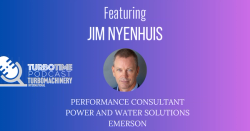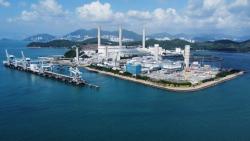
OR WAIT null SECS
© 2024 MJH Life Sciences™ and Turbomachinery Magazine. All rights reserved.
Radial steam turbine rejuvenated
Overhauling a steam turbine as part of a planned maintenance schedule is a regular task for many large-scale industrial enterprises that depend on these units to generate electrical power. However, for one pulp manufacturing plant in Eastern Canada, the refurbishment of its 25 MW Stal Laval radial steam turbine would need expert engineering to resolve the vibration issue – the first time this repair has been completed in North America and it would be successfully delivered by Sulzer.
Industrial processes that have high power consumption often use on-site power generation to provide a cost effective power supply, but this entails also providing the necessary levels of maintenance support to keep the turbine operational. In many cases, this will be provided by a specialist service engineering company that has the necessary facilities and expertise to deliver timely repairs and maintenance.
Minimizing repair times
Steam turbines are used around the world to generate power, but the vast majority are of the axial flow design. In situations where radial flow designed units need to be repaired, they are usually shipped to Europe, where they are more accustomed to this design. However, this increases the total repair time, which is a crucial factor when the entire manufacturing process relies on this power source.
Manufactured in the 1970s, the 25 MW Stal Laval radial turbine uses steam that enters along the center-line of machine and expands outwards through two contra-rotating rotors until it reaches the exhaust pipework on the periphery of the turbine. The two rotors, left hand (LH) and right hand (RH) are made up of nine and eight stages respectively and are each coupled to a generator.
Although more common in Europe, radial turbines are also used in marine applications due to their relatively compact dimensions, compared to an axial turbine with a similar power output. Their design means that they are limited to a maximum output of approximately 30 MW, making them more suitable to small industrial generating sets rather than power generation for the grid.
In-depth assessment
Initially, the customer contacted Sulzer asking for assistance with investigating a vibration issue on the steam turbine. Working with the customer, the Sulzer team examined the vibration data and also conducted a visual inspection of the rotors during a brief shutdown period.
Analysis of the inspection showed that the RH rotor had helical linear cracks on all of the steam inlets, both rotors had excessive steam seal clearances and both of the rotor couplings would need to be replaced. Due to the design of the turbine, the only way to repair the steam inlets would be to completely remanufacture the right-hand stub shaft.
As the depth and complexity of the repair became apparent, it was clear that the project would require some of the specialist facilities in the Edmonton Service Center, which has considerable experience in reverse engineering complex components. With the aim of delivering a more reliable and efficient turbine, Sulzer instigated a metallurgical root cause failure analysis of the damaged shaft to determine if there were any design modifications that could be implemented before remanufacturing began.
Even the repair of conventional steam turbines requires a considerable amount of high specification machine tooling and large capacity over-head cranes as well as a highly skilled workforce. When the repair involves an almost unique design, the experience and skill of the engineers really comes to the fore.
Reverse engineering improvements
The Edmonton Service Center specializes in the refurbishment and delivery of performance upgrades for large compressors and turbines. The ability to design and create replacement parts through reverse engineering enables the team in Edmonton to deliver improved reliability and extended service life for a wide range of plant assets.
The initial investigation showed that the material used to create the RH stub shaft could be replaced with ASTM A470 class 7 forging, which is commonly used in the modern turbine industry. The class 7 material has a higher nickel and chromium content, giving it a higher yield strength and better resistance to heat and corrosion than the original.
The new stub shaft was designed, machined, tested and inspected before it was ready for final assembly. In the meantime, the rotors were also refurbished with special attention paid to the steam seals which provide a uniform pressure drop between each turbine stage. The original seals featured an outdated design that was machined out and modified to accommodate the common ‘J-Strip’ seal which was installed and gave a tighter clearance between each stage of just 0.010”.
Precision manufacturing
Finally, the repair team turned their attention to the creation of two new rotor couplings, which connect the turbine rotors to the generators. The couplings are installed using a set of eight high tensile, tapered pins and a series of large, threaded sleeves that together ensure a uniform torque transfer.
The rotor couplings also act as a journal bearing, supporting the overhung rotor. As such, the couplings had to be machined to a very tight tolerance with a high quality surface finish to ensure the perfect fit. The Edmonton Service Center is equipped with modern machining technology that allowed the high precision couplings to be manufactured on time.
At-speed balancing
Once all of the machining was complete, the left and right hand rotors were reassembled, checked for run-out and then low speed balanced in Edmonton. The last operation required the completed rotors to be shipped to Sulzer’s Houston Service Center, where the company has its own at-speed balancing facility.
This crucial process uses vibration diagnostics to analyze the radial vibration at the bearings and ensures that the optimum balance is achieved at operating speed as well as minimizing the deflection and vibration amplitudes during ramp up and coast down.
With the balancing complete, the rotors were returned to the pulp manufacturing plant, where the field service team assisted with the installation and commissioning of the turbine.



